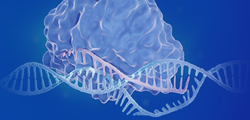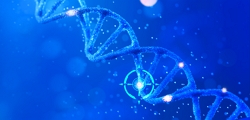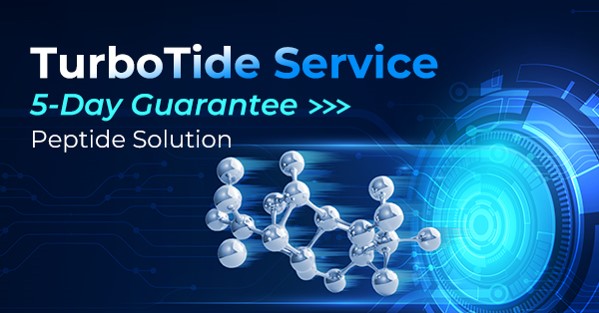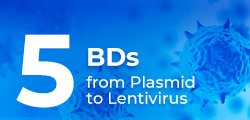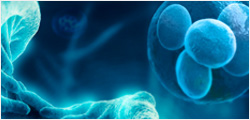-
REAGENT SERVICES
Hot!
-
Most Popular Services
-
Molecular Biology
-
Recombinant Antibody/Protein
-
Reagent Antibody
-
CRISPR Gene Editing
-
DNA Mutant Library
-
IVT RNA and LNP Formulations
-
Oligo Synthesis
-
Peptides
-
Cell Engineering
-
- Gene Synthesis FLASH Gene
- GenBrick™ Up to 200kb
- Gene Fragments Up to 3kb now
- Plasmid DNA Preparation Upgraded
- Cloning and Subcloning
- ORF cDNA Clones
- mRNA Plasmid Solutions New!
- Cell free mRNA Template New!
- AAV Plasmid Solutions New!
- Mutagenesis
- GenCircle™ Double-Stranded DNA New!
- GenSmart™ Online Tools
-
-
PRODUCTS
-
Most Popular Reagents
-
 Instruments
Instruments
-
Antibodies
-
ELISA Kits
-
Protein Electrophoresis and Blotting
-
Protein and Antibody Purification
-
Recombinant Proteins
-
Molecular Biology
-
Stable Cell Lines
-
Cell Isolation and Activation
-
 IVD Raw Materials
IVD Raw Materials
-
 Therapy Applications
Therapy Applications
-
Resources
-
- All Instruments
- Automated Protein and Antibody Purification SystemNew!
- Automated Plasmid MaxiprepHot!
- Automated Plasmid/Protein/Antibody Mini-scale Purification
- eBlot™ Protein Transfer System
- eStain™ Protein Staining System
- eZwest™ Lite Automated Western Blotting Device
- CytoSinct™ 1000 Cell Isolation Instrument
-
- Pharmacokinetics and Immunogenicity ELISA Kits
- Viral Titration QC ELISA Kits
- -- Lentivirus Titer p24 ELISA KitHot!
- -- MuLV Titer p30 ELISA KitNew!
- -- AAV2 and AAVX Titer Capsid ELISA Kits
- Residual Detection ELISA Kits
- -- T7 RNA Polymerase ELISA KitNew!
- -- BSA ELISA Kit, 2G
- -- Cas9 ELISA KitHot!
- -- Protein A ELISA KitHot!
- -- His tagged protein detection & purification
- dsRNA ELISA Kit
- Endonuclease ELISA Kit
- COVID-19 Detection cPass™ Technology Kits
-
- Automated Maxi-Plasmid PurificationHot!
- Automated Mini-Plasmid PurificationNew!
- PCR Reagents
- S.marcescens Nuclease Benz-Neburase™
- DNA Assembly GenBuilder™
- Cas9 / Cas12a / Cas13a Nucleases
- Base and Prime Editing Nucleases
- GMP Cas9 Nucleases
- CRISPR sgRNA Synthesis
- HDR Knock-in Template
- CRISPR Gene Editing Kits and Antibodies
-
![AmMag™ Quatro Automated Plasmid Purification]() AmMag™ Quatro automated plasmid purification
AmMag™ Quatro automated plasmid purification
-
![Anti-Camelid VHH]() MonoRab™ Anti-VHH Antibodies
MonoRab™ Anti-VHH Antibodies
-
![ELISA Kits]() ELISA Kits
ELISA Kits
-
![Precast Gels]() SurePAGE™ Precast Gels
SurePAGE™ Precast Gels
-
![Quatro ProAb Automated Protein and Antibody Purification System]() AmMag™ Quatro ProAb Automated Protein and Antibody Purification System
AmMag™ Quatro ProAb Automated Protein and Antibody Purification System
-
![Target Proteins]() Target Proteins
Target Proteins
-
![AmMag™ Quatro Automated Plasmid Purification]() AmMag™ Quatro automated plasmid purification
AmMag™ Quatro automated plasmid purification
-
![Stable Cell Lines]() Stable Cell Lines
Stable Cell Lines
-
![Cell Isolation and Activation]() Cell Isolation and Activation
Cell Isolation and Activation
-
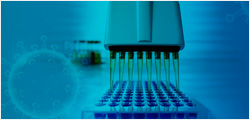 IVD Raw Materials
IVD Raw Materials
-
![Quick
Order]() Quick Order
Quick Order
-
![Quick
Order]() Quick Order
Quick Order
- APPLICATIONS
- RESOURCES
- ABOUT US
- SIGN IN My Account SIGN OUT
- REGISTER
Resources » Reference Databases » Citations Database
Services & ProductsNews & Blogs- Ensure Safe & Effective Peptide Drugs: Mastering GMP Compliance for Quality Control
- CRACK the CRISPR cell line construction bottlenecks- Genome Editing CRISPR
- Engineered NK cells, off-the-shelf solution | GenScript
- Has Western Blot Become Obsolete?
- Top 4 Reasons to Develop Rabbit Antibodies
- An improved phage display strategy for improving protein solubility
- Driving Antibody Development through Improved Engineering Technologies
- The Power of Recombinant Proteins in the Age of COVID-19
For each citation that was shared on social media (LinkedIn, Facebook, or Twitter) with the “@GenScript” tag, the author will be rewarded with a $10 Amazon gift card or 2,000 GS points.The parasite Entamoeba histolytica exploits the activities of human matrix metalloproteinases to invade colonic tissue.
Nat Commun.. 2014-10; 5:5142Thibeaux R, AvÉ P, Bernier M, Morcelet M, Frileux P, GuillÉn N, LabruyÈre E. Institut Pasteur, Unité Biologie Cellulaire du Parasitisme, 75724 Paris Cedex 15, France.Products/Services Used Details Operation Abstract
Intestinal invasion by the protozoan parasite Entamoeba histolytica is characterized by remodelling of the extracellular matrix (ECM). The parasite cysteine proteinase A5 (CP-A5) is thought to cooperate with human matrix metalloproteinases (MMPs) involved in ECM degradation. Here, we investigate the role CP-A5 plays in the regulation of MMPs upon mucosal invasion. We use human colon explants to determine whether CP-A5 activates human MMPs. Inhibition of the MMPs' proteolytic activities abolishes remodelling of the fibrillar collagen structure and prevents trophozoite invasion of the mucosa. In the presence of trophozoites, MMPs-1 and -3 are overexpressed and are associated with fibrillar collagen remodelling. I... More
Intestinal invasion by the protozoan parasite Entamoeba histolytica is characterized by remodelling of the extracellular matrix (ECM). The parasite cysteine proteinase A5 (CP-A5) is thought to cooperate with human matrix metalloproteinases (MMPs) involved in ECM degradation. Here, we investigate the role CP-A5 plays in the regulation of MMPs upon mucosal invasion. We use human colon explants to determine whether CP-A5 activates human MMPs. Inhibition of the MMPs' proteolytic activities abolishes remodelling of the fibrillar collagen structure and prevents trophozoite invasion of the mucosa. In the presence of trophozoites, MMPs-1 and -3 are overexpressed and are associated with fibrillar collagen remodelling. In vitro, CP-A5 performs the catalytic cleavage needed to activate pro-MMP-3, which in turn activates pro-MMP-1. Ex vivo, incubation with recombinant CP-A5 was enough to rescue CP-A5-defective trophozoites. Our results suggest that MMP-3 and/or CP-A5 inhibitors may be of value in further studies aiming to treat intestinal amoebiasis.Keywords

-




